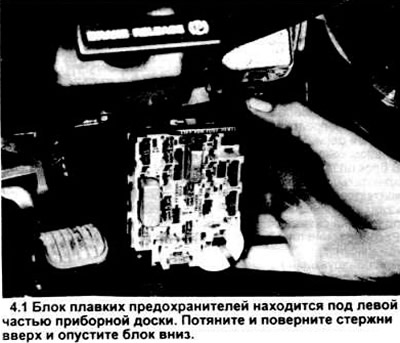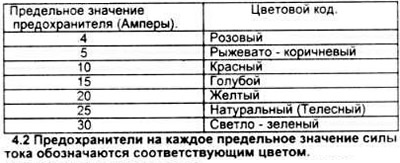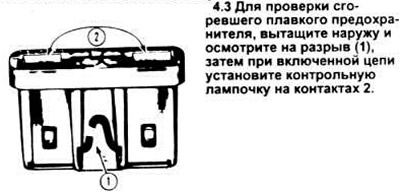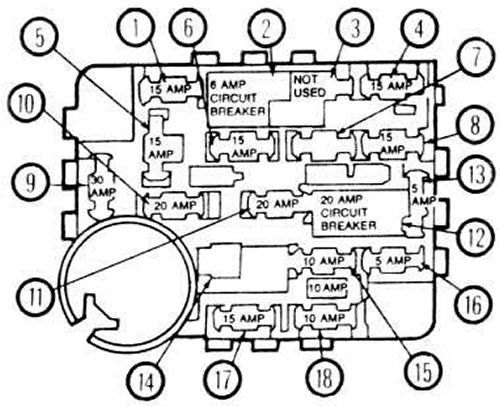
Miniature elements are mounted in the fuse block, their contact and the convenient arrangement of flat contacts makes it easy to install and remove them. Above each fuse on the front side of the panel cover is a diagram of the corresponding electrical circuit. The location of the fuses is shown in the figure (see picture).

If you find any electrical problems, check the fuses first. Visually inspect the fuse for obvious damage (see picture).

The fuse is inserted and removed strictly straight without turning.
Replace blown fuses with new ones of the same type and rated current.
The limit value of its level in amperes is fused into the body of each fuse.
Fuses of different levels have a different color. On the corresponding color code (see picture) the limit values in amps for the fuses and the corresponding colors are indicated.

4.4. Standard fuse block.
Circuit breakers:
1. Stop light / turn signal / alarm
2. Washer wiper.
3. Not used.
4. Front lighting, parking light, horn.
5. Electronic unit, rear window heating switch, rear lighting.
6. Washer and wiper (station wagon), power windows, radio and headlight illumination.
7. Not used.
8. Clock, tape recorder, interior lighting, electric mirror.
9. Engine heater / air conditioner.
10. High beam.
11. Radio / cassette recorder.
12. Ignition, horn relay and horn itself.
13. Dashboard lights.
14. Not used.
15. Stop - signal, license plate and body lights.
16. The storage device of the instrument cluster.
17. Block of electronic devices, compressor clutch.
18. Warning lights / seat belt buzzer.
Caution: Be sure to turn off all electrical appliances and the ignition before changing the fuse. Do not replace the fuse with conductors or foil. You can damage the electrical system. If a newly installed fuse blows immediately, it is due to a short circuit in the circuit.
Visitor comments